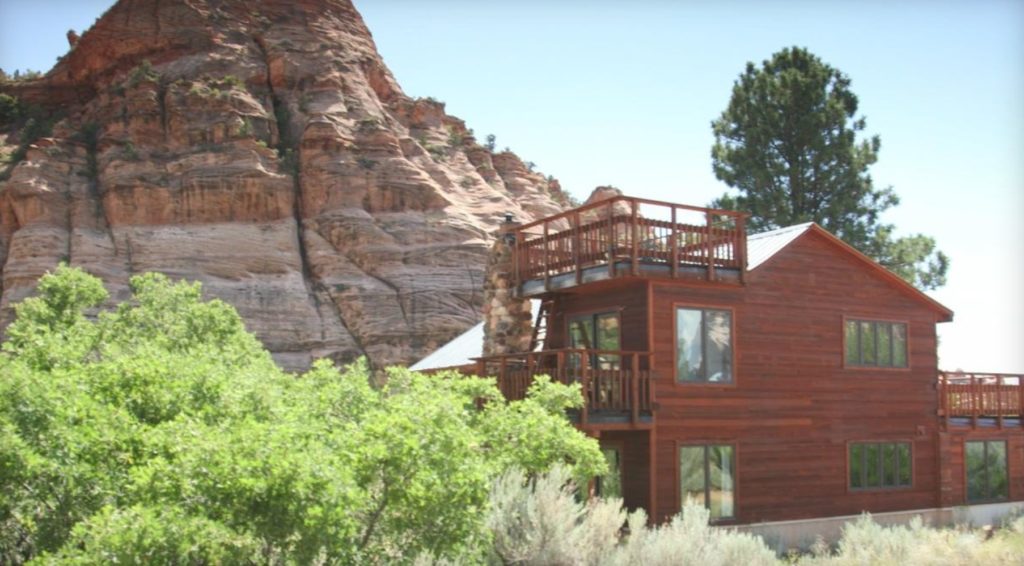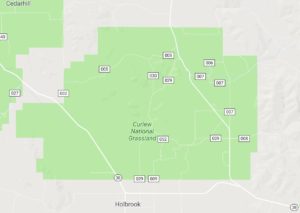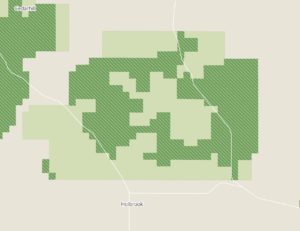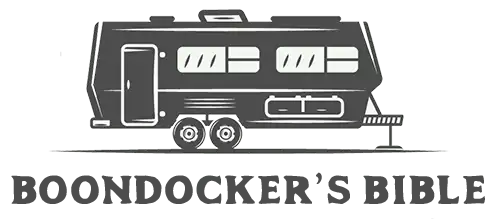Not all land inside a national forest or national park is public.
A lot of this land is privately owned by residents, businesses, and organizations. Some national forests and grasslands are so heavily filled with private property, their boundaries have more holes than a slice of swiss cheese.

Why There is Private Property Inside National Forests and Parks
These lands are referred to as, “inholdings”, and people who own them are called, “inholders”.
This land was private property before a national forest or national park came into existence. In most cases, these lands were deeded as part of the Homestead Act of 1862, and were passed down by generation or sold to others. Often times, the federal government will expand the boundaries of a national forest or park by buying up adjacent properties and slowly create islands of private land.
Can I Camp or Drive Through Inholdings?
No, you cannot.
It’s private property, plain and simple, no different than private property anywhere else. Even though an inholding may be within the greater “shell” of a national forest or national park, it is technically not inside USFS or NPS boundaries. These inholdings are islands that are exempt from laws and rules specific to the USFS and NPS.
Google Maps is Misleading
 |
| Curlew National Grassland as depicted on Google Maps |
 |
| Curlew’s actual federal land is shown in dark green, while the light green represents inholdings. Map from FreeRoam |
When you view a national forest, grassland or national park on Google Maps, you will see a large, green-colored, polygonal shape that appears to consume whole towns and cities. This does not mean the town or city is part of the national forest or national park. It’s just that Google Maps is showing you the outer “shell” of the forest or park, and not official boundaries.
Too Many People Trespass Into Inholdings
Because so many RVers and campers rely on Google Maps, they often trespass into private property. Never rely on Google Maps to find the boundaries of a national forest, park, or grassland.
Inholders Put Up Illegal Fences, Gates, and Signs
Inholders often extend their fencing and gates well into federal land as a way to keep campers out of their sight. Because RVing and camping has become so popular, many of these property owners wake up to see tents and motorhomes 20 or 30 feet away from their property line. It’s illegal for them to extend fencing beyond their inholdings, which is why it’s so important for you to know exactly where federal boundaries lie.
How to Find the Official Boundaries of a National Forest or National Park
With respect to national forests and grasslands…
- Obtain the Motor Vehicle Use Map (MVUM) for that forest or grassland. This can be obtained from each forest’s or grassland’s visitor center. This will illustrate precisely the boundaries of the forest or grassland, and the boundaries of each inholding.
- Use our Boondocking Map. This map displays a USFS overlay, showing the exact boundaries of the forest or grassland. You can also view this overlay against a satellite map to reveal dirt roads and campsites.
With respect to national parks…
- Obtain a map from the national park visitor center. This is the same map you are normally handed when you drive up to the park’s entrance. Most of these maps will depict where private property is located. Otherwise, you will have to inquire at a visitor center if you need more details.
Keywords
camp national forest, camping national forest, national forest camping


Can I Camp or Drive Through Inholdings? Your response is “No, you cannot.” I think this answer lacks precision. If you are traveling on a national forest road, and that road takes you through private property (i.e. an inholding), it’s my understanding you can “drive through” the property on the public road. I certainly agree with your answer when it comes to leaving the roadway, camping, hiking, or other forms of trespass (i.e. drone use over private property).
Thanks for the point Jason, yes if the Forest Service has an easement right to that road, then yes you can use it. But as a camper you have to know which roads these are because many inholders are illegally putting up gates on these roads to keep campers out.
The park protectionist would want to obstruct campers illegally trasspassing on forest owned property. 5 campers have there packs shotting down mrs grizzles and no one belives it. The rivers that feed them are dying from the campers on the road feeding trash and waste water to the propertys beauty to decrease the value of the area. Theyve even got gas leaks and such driving cars into backyard rivers.
There are villages and towns and even cities in a national forest where I live, and highways and state roads going through the national forest. You can stop for gas, or even food. Then inside the forest there are federal parks recreation services- camping grounds, hiking, picnic areas, and there might be a lake or two for camping and boating and fishing. I only know the Hoosier National Forest in Indiana, and the Daniel Boone National Forest in Kentucky.
I was informed that the sunset national forest campground and day use area on lake of the woods lake near Klamath falls Oregon was “federal national forest private property “and that my America the beautiful and special access pass for being 100% disabled Army Veteran injured in combated oif/oef 2009 2010 does not grant me and my rescue dog (faith) access waived 8$ fee for the day use area and I was forced to leave after driving 200 miles to get there and waking up to a man in a golf cart yelling at me asking what the hell was i doing . I guess sum woke liberal Californians purchased the lake but still have national forest service maintain it and they regulate the price for camping parking who is and can enter the national forest and ho can’t they have built over 50 nice cabins all with personal docks that match and they are renting sellling and trading these small cabin lots as they see fit . It’s very pretty place I would have loved to walk my dog around the Oreo national forest park and forest area but instead I drove 50 miles took a nap and then drove back home. When this makes sense to some one that can create a transparent narrative that I can follow to understand how this happens please email me at mccune.t.l@gmail.com
Sgt. T McCune